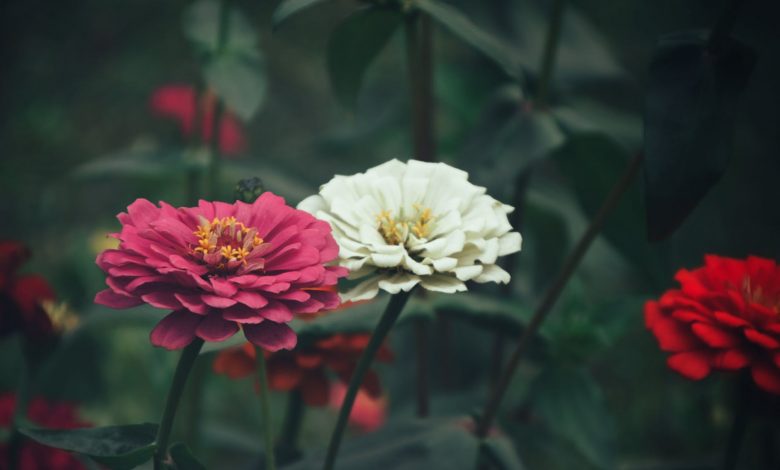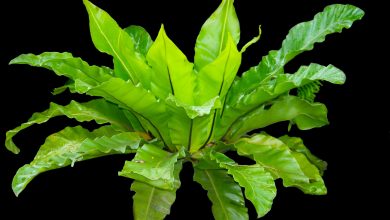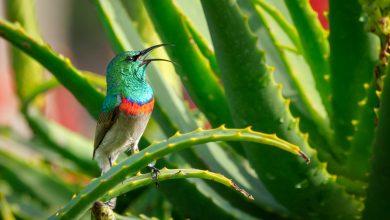A Guide to Zinnias

Among the entirety of the unique joys of the blossom garden, an exceptionally commonplace sprout consistently starts heaps of deference from veteran horticulturists and easygoing bystanders the same. The zinnia — a plant local to Mexico — lights up the nursery from midsummer right to the main hard ice. Be that as it may, these midyear blooms win their place in our souls for more than their great looks. Peruse on to perceive what these exotic plants bring to the table.
Planting Zinnias in Your Garden
Developing zinnias from seed may be one of the most uncomplicated cultivating assignments of the year. Where spring heats up right on time, hold up until the last ice has gone before straightforwardly planting zinnia seeds outside. Plant the seeds just about ¼-inch down. You’ll see seedlings grow in four to seven days. When the seedlings reach around three inches tall, meager them with the goal that they’re 6 to 18 inches separated to boost air course, a vital aspect for keeping zinnias looking great all season.
In more relaxed atmospheres, start seeds inside anywhere from four months to about a month and a half before your zone’s regular last-ice date. Solidify off the plants by traveling plate outside for a couple of hours out of every previous day, planting them in your nursery.
If you purchase zinnia plants at the nursery focus that have just arrived at the size at which blossoms sprout, facilitate the progress to your nursery by pruning the plants back by 33 percent. At that point, kick back and watch your zinnia fix develop and prosper.

Characteristics of Zinnias
1. Zinnias work fast.
If there’s a simpler bloom to develop, we’d prefer to think about it. Zinnias are annuals, implying that they go from seed to bloom to seed rapidly. Zinnias’ pointy seeds, molded like little sharpened stones, require just essential nursery prep to grow: sow them in well-depleted soil, where there is full sun and loads of summer warmth, and you’ll have small seedlings in days, with blossoms controlling up in only half a month. No perpetual can guarantee that speed!
One cultivating companion doesn’t try to set up her dirt—she sprinkles seeds any place she’d like a couple of zinnias, water those spots for two or three days. She lets zinnias’ anything but challenging-to-develop nature follow through to its logical end.
2. Zinnias work wherever you need color.
This plant has many common names like:
- ‘Pop Art’
- ‘Green Envy’
- ‘Persian Carpet’
- ‘Candy Cane’
Zinnias arrive in an over the top palette of each brilliant and pastel (aside from the blues), in addition to bi-hues, tri-hues, and insane blanket blends intended for cutting, to draw in pollinators, and so forth. Besides crisp shading, numerous new zinnia arrangements offer tallness and width alternatives, as well.
3. Zinnias cut your workload.
Zinnias are low support. Since they’re quickly developing, they conceal out weeds. So there is no requirement of a method for treating or protection. Deadheading produces more blooms. No opportunity to deadhead? The Zaharas referenced in the sidebar is self-cleaning—a continuous saver with regards to a large bed.
Since zinnias are local to the meadows of the southwestern states, Mexico, and South America, they realize how to deal with dry conditions. In any case, wet summers (we’ve had one up until this point) can cause significant damage. What’s more, that can prompt great buildup and leaf spots.
4. Zinnias work year after year.
If you want to save the zinnia seed, it’s straightforward in process. Just let the flower dry, and when it gets dry, ultimately, pick the seedheads. You need to crush the collected stem, and after that, you will get enough seeds for the future. For safety purposes, put it in the bag and keep it in a dry and cool place. Zinnias are worked as a magnet for the nectar seeking butterflies, so these butterflies also play an essential role in the growth of the plant.

Types of Zinnias
1. Dreamland Series
Get a full-size blossom on a minimized plant with cultivars of this series. Diminutive person and minimal, these zinnias have completely double flowerheads, up to four creeps crosswise over in a broad shading reach; stems are 8–12 inches tall.
2. Thumbelina Series
The cultivars are a tiny person and spreading, with single or semi-twofold, climate-safe flowerheads in numerous hues. Their petals are 1-¼ inch crosswise over, and stems grow up to six inches in length.
3. State Fair Series
This series will be the greatest and tallest of all, with enormous, twofold flowerheads that are three crawls over. Stems develop to 30 inches tall.

Taking Care of Zinnias
Pruning
For taller assortments that you’d prefer to use for cut blossoms, Floret Flower Farms suggests cutting out the in bloom when the plants are around 18 inches tall. Even though it “feels entirely outlandish at the time, it will urge plants to start expanding low and, at last, produce any long stems.” Spent sprouts ought to be deadheaded to support and drag out further blooming.
Revisions and Fertilizer
Add fertilizer to the zone where zinnias will be planted to improve the dirt. An incidental light portion of well-adjusted manure can be applied, yet isn’t always essential.
Watering
Water regularly, for a sum of around one inch for each week. Even though they can endure dry conditions, they will improve steady dampness in the dirt. Get abundant dampness far from the foliage by watering at the base of the plant; this will help keep your plant stable and avert ailment.
Zinnia Soil
While zinnias aren’t especially fastidious about their dirt, they do lean toward it to be fruitful, humus-rich, and well-depleted and with a pH of 5.5 to 7.5. The zinnia isn’t finicky about the dirt it develops in, yet it will be more advantageous and more grounded if you set aside the effort to condition the earth before planting. Blend one section of filtered fertilizer with every three pieces of existing soil, alongside a sprinkle of gypsum. In the wake of molding the dirt once, you can keep it stable by including filtered fertilizer underneath each new appropriation of mulch, enabling the supplements to work down through the soil usually gradually.
Proliferation
Seeds are anything but difficult to spare by letting the blooms dry totally on the stem. Evacuate seeds by daintily smashing the dried seed head. Store the seeds in a cool, dry spot for planting the following spring. Remember, in any case, that seeds spared from half and half plants may not grow consistent with the parent plant.
Maladies and Pests
Bacterial and parasitic spots, significant buildup, and bacterial shrink would all be able to be problematic for zinnias. Keeping the foliage dry and giving great air courses will go far toward counteractive action. Zinnias can likewise be host to caterpillars, mealybugs, and insect parasites. It’s ideal for evacuating caterpillars by hand, yet mealybugs and bug parasites can be treated with insecticidal cleanser. Attempt cultivars from the Profusion arrangement for expanded protection from great mold.

Design Ideas for Zinnias
Blossom Beds
Where you place zinnias for bloom bed planting relies upon what assortment of zinnias you intend to utilize. A few varieties are dainty, standing just around six inches tall, yet different types possibly arrive at two feet or more in tallness. Make sure to get ready for the size of your plants, with the goal that your zinnias don’t swarm out blooms that are developing behind them.
Fence Lines
Zinnias are incredible for outskirts planting. Since they’re not particularly critical about the dirt, they do well along the wall, where the dirt quality may contrast impressively along a similar line. On the off chance that you are not sure of the dirt quality, utilizing zinnias for a fence outskirt or along the front of the house is a smart thought. This gives shading all through the mid-year and has the additional advantage of being a magnificent attractor for butterflies.

FAQs about Zinnias
Would it be advisable for me to begin my zinnias inside or outside?
Zinnias might be begun inside or straightforwardly in the nursery. On the off chance that you have excellent conditions for developing them inside – for example, plant lights, a warmth tangle for germination – at that point, you can get a head start by beginning them inside. Be that as it may, zinnias are anything but complicated to coordinate and sow, and they blossom decently fast from seed so that immediate planting might be a superior alternative for individual nursery workers.
How would I condition my cut zinnia blooms?
Carry a pail of water with you to the nursery when you cut your blooms and put them in the water when you cut them. This will enable them to take up water through the naturally cut stem. Slice on a point to give progressive surface zone for the water to be taken up. Keep them out of the direct sun.
Do I have to stake my zinnias?
Taller assortments may profit by staking, mainly if they are in a breezy zone.
For what reason are my zinnias tall and slim with a lot of smaller blossoms than anticipated?
If zinnias are planted too firmly together, they will deliver tall plants and a lot of littler blossoms. Continuously pursue the prescribed separating on the planting guidelines.

Fun Facts of Zinnias
- Zinnia is a ragged herbaceous plant. It creates various shaggy branches that can arrive at 4 to 48 creeps in stature, contingent upon the cultivar.
- Zinnia has restricted, spear molded leaves that have an unpleasant, sandpaper-like surface. Leaves are oppositely orchestrated on the stem.
- Zinnia produces a single blossom head over the flowering stem. The blossom head comprises of little, fruitful blooms assembled in the focal circle, encompassed by a petal-formed column of barren blossoms. A blossom head can be up to seven inches wide. Zinnia can produce flowers with the two kinds of regenerative organs (bright blooms).
- Zinnia can be of any color, including orange, white, pink, yellow-red, lilac, purple, or multi-shaded. Petals can be bent, wound, or pointed. A few zinnias produce vault molded bloom heads.
- Zinnia sprouts from mid-summer until the first ice. Blooms draw in butterflies and hummingbirds, which are liable for the fertilization of these plants.
- The product of zinnia is dry achene loaded up with one seed.
- Zinnia is a self-planting plant, which implies that it dissipates the seed without outside help.
- Zinnia is named after Johann Gottfried Zinn, a celebrated German botanist who depicted this plant.
- Zinnia is known as “cut and come back again blooms,” given the capacity to deliver new blossom buds not long after cutting the flowering stem over the leaves.
- Before it got mainstream in cultivation, zinnia was viewed as monstrous, little, and ugly. Epithet “disorder of the eye,” begat by Spanish individuals before, is as yet used to depict this plant in Mexico.
- Zinnia is often developed in gardens made out of plants which draw in butterflies.
- Zinnia is an excellent friend plant since it draws in hummingbirds that take out whiteflies (creepy crawlies that feed on the leaves of different plants in the nurseries).
- Zinnias are well-known cut blossoms that are utilized for the planning of different bunches and dried decorative designs. Jar’s life of zinnia is seven days.
- Zinnia symbolizes kinship in the language of blossoms.
- Zinnia can be developed as a yearly (life expectancy: one year) or enduring plant (life expectancy: over two years), contingent upon the atmosphere.

Zinnia is an herbaceous plant that has a place with the aster family. There are 20 species and more than 100 cultivars of zinnia that vary in size, shading, and developing propensities. Zinnia is local to Mexico, South America, and southwestern pieces of the USA. It flourishes in zones with a warm atmosphere, as a rule in scrublands and dry prairies. Zinnia develops on fertile, well-depleted soil, presented to coordinate daylight. Because of low-support and lovely blossoms, zinnia is one of the most customarily grown decorative plants on the planet.



